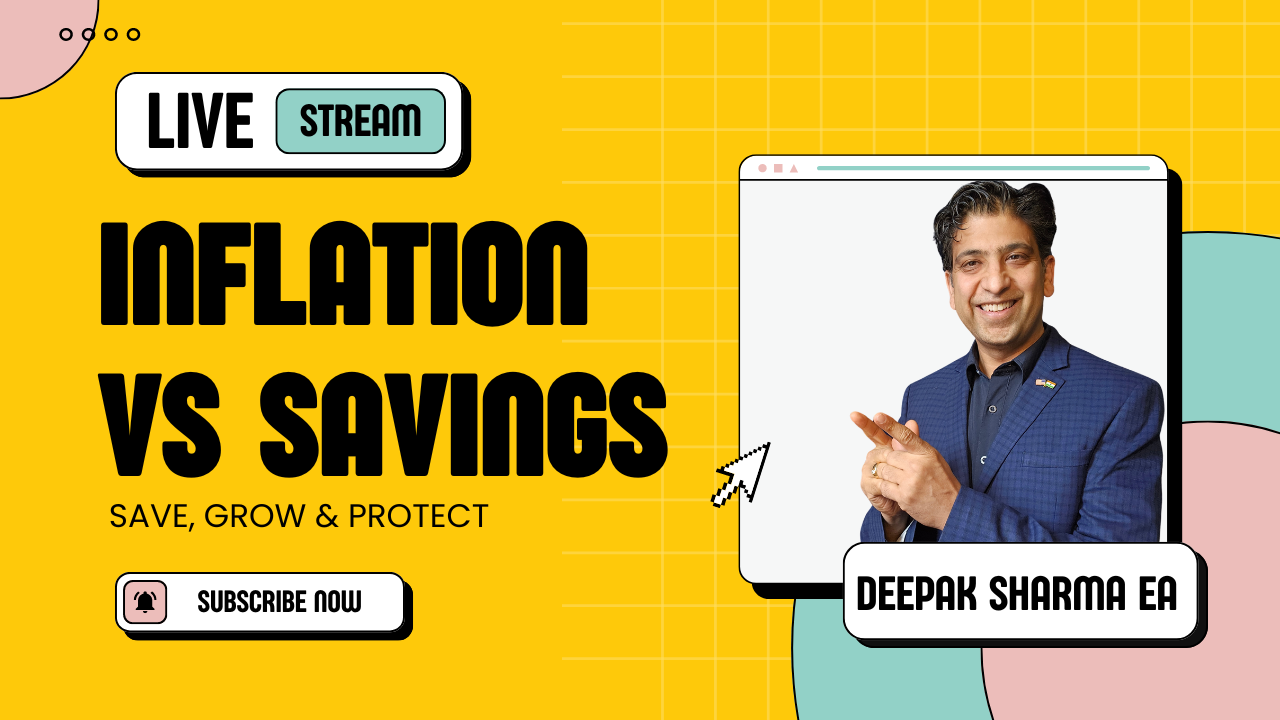
You've probably heard it countless times: "Save your money, and you'll be set for life." But what if I told you that simply saving could actually be making you go broke? It’s a shocking revelation, but in today’s economic climate, saving without strategy could be one of the riskiest moves you make. Let's explore why this is happening and, more importantly, what you should do instead.
Imagine this: It's the 1970s, and you're concerned about rising inflation and the looming threat of a recession. You decide to play it safe, withdrawing your money from the stock market and storing it in cash or perhaps even gold. Fast forward to today, and that $50,000 you saved is now worth significantly less in purchasing power—potentially as little as $10,000.
The root of the problem? Devaluation. As the cost of living rises and inflation persists, the real value of money held in cash declines. Even if you have the same amount saved, what that money can actually buy diminishes over time. Historical data shows that inflation rates have consistently eroded the purchasing power of cash savings, especially in times of economic uncertainty.
To understand the impact of inflation on your savings, let’s take a look at inflation trends over the past 50 years in the United States:
Understanding different categories of inflation can help you make more informed financial decisions. Here are the primary types:
Demand-Pull Inflation: Occurs when demand for goods and services exceeds supply. This often happens during strong economic growth. Impact: It can lead to rising prices across the board, decreasing the purchasing power of cash.
Cost-Push Inflation: Caused by rising costs of production, such as labor and raw materials, which lead companies to raise prices. Impact: This can squeeze profit margins and result in higher consumer prices, affecting your savings' value.
Built-In Inflation: Often linked to the "wage-price spiral," where wages increase, leading to higher costs for goods and services, prompting further wage demands. Impact: It perpetuates a cycle of rising prices, steadily eroding the value of money.
Hyperinflation: An extreme form of inflation where prices increase rapidly, often exceeding 50% per month. It is rare but devastating. Impact: It can lead to a total collapse of the monetary system, making cash almost worthless.
Deflation: Opposite of inflation, characterized by falling prices. While it might seem beneficial, deflation can lead to decreased consumer spending and a slowing economy. Impact: It can result in a recession, reducing returns on investments and savings alike.
Inflation is the slow, steady erosion of your money’s value. For example, in recent years, we have seen inflation rates rise dramatically due to various economic factors, including the introduction of trillions of dollars into the economy during the COVID-19 pandemic. This influx led to increased prices across the board, meaning your saved dollars are worth less now than they were before.
A startling statistic: if inflation averages just 3% per year, your money’s purchasing power halves roughly every 24 years. So, while your savings account might show the same balance, what you can actually do with that money shrinks year by year.
So, what's the alternative? The key is to invest in assets that not only retain value but appreciate over time. Here are some practical steps to consider:
Diversify Your Investments: Instead of putting all your money in a savings account, spread it across various assets. Index funds, for example, offer exposure to the entire stock market, providing growth potential that outpaces inflation.
Invest in Real Estate: Real estate has historically been a strong hedge against inflation. Rental properties, in particular, provide cash flow and potential appreciation, protecting your wealth from economic downturns.
Consider Inflation-Indexed Bonds: These are bonds specifically designed to protect against inflation. While they may not offer the highest returns, they do provide a safeguard for the value of your money.
Let’s consider John, a conservative investor. John was hesitant to invest in the stock market due to its perceived volatility. Instead, he chose to invest in rental properties. Over the years, not only did his properties appreciate in value, but they also provided him with steady rental income. Despite fluctuations in the market, John’s investments grew, and his cash flow remained positive, illustrating the power of investing in cash flow assets.
If you're still relying solely on savings, it's time to rethink your strategy. While saving is essential, it's not enough in today's inflationary environment. Diversify your portfolio, invest in assets that offer both growth and income, and protect your wealth from the silent killer that is inflation.
Take control of your financial future today. Evaluate your savings and start exploring investment options that can help you not just preserve, but grow your wealth over time. Don’t let inflation rob you of your hard-earned money—act now!